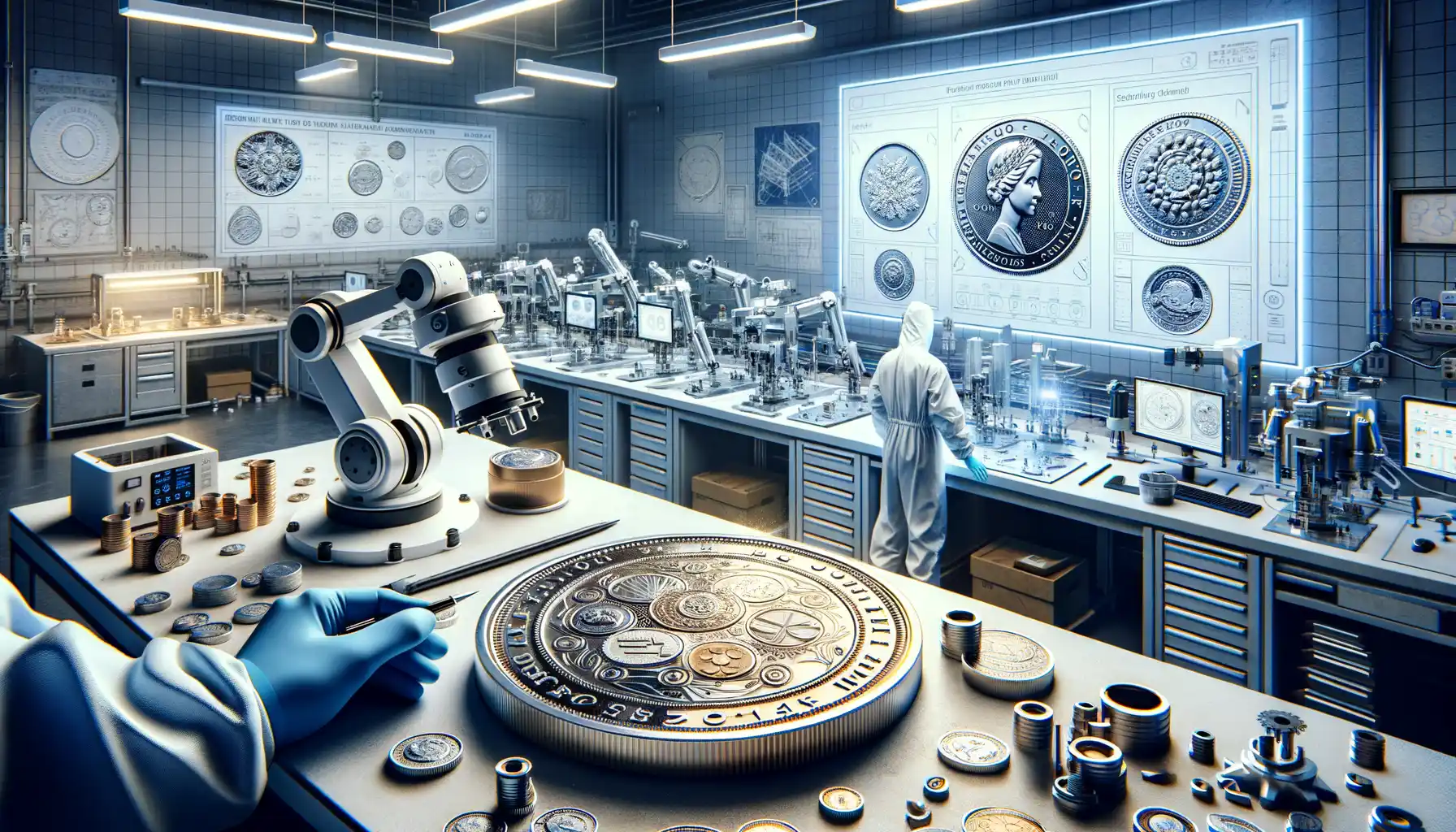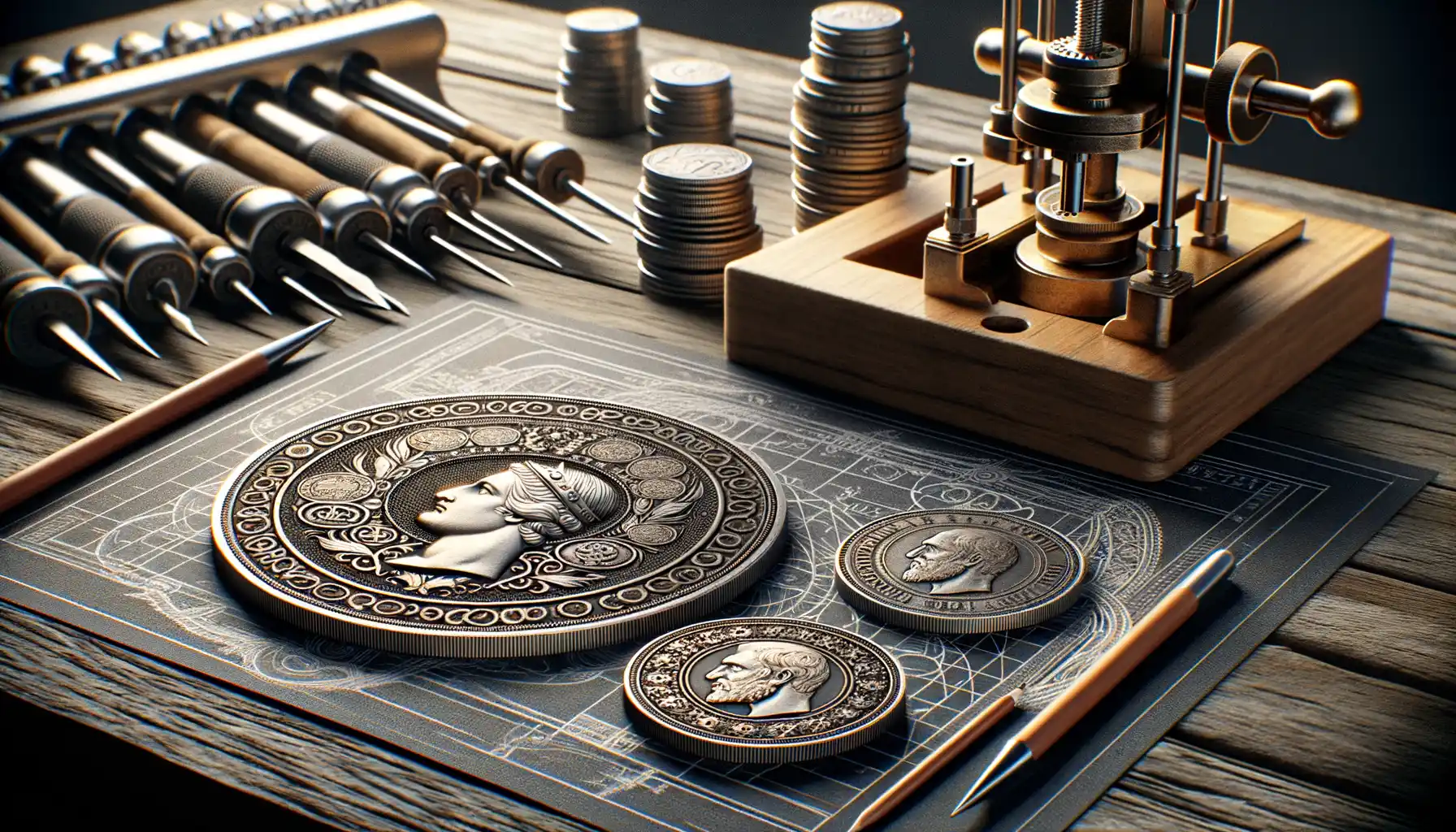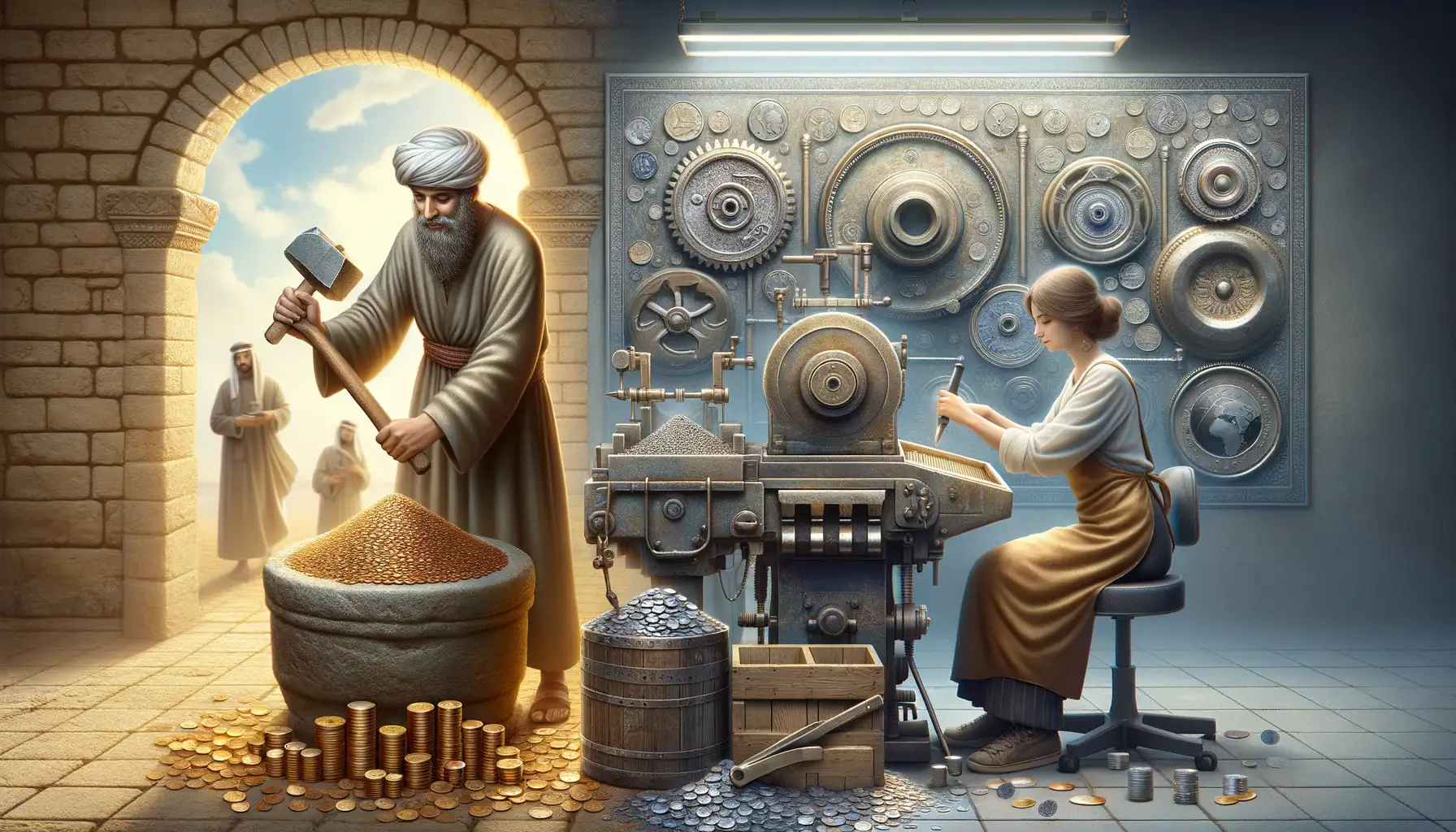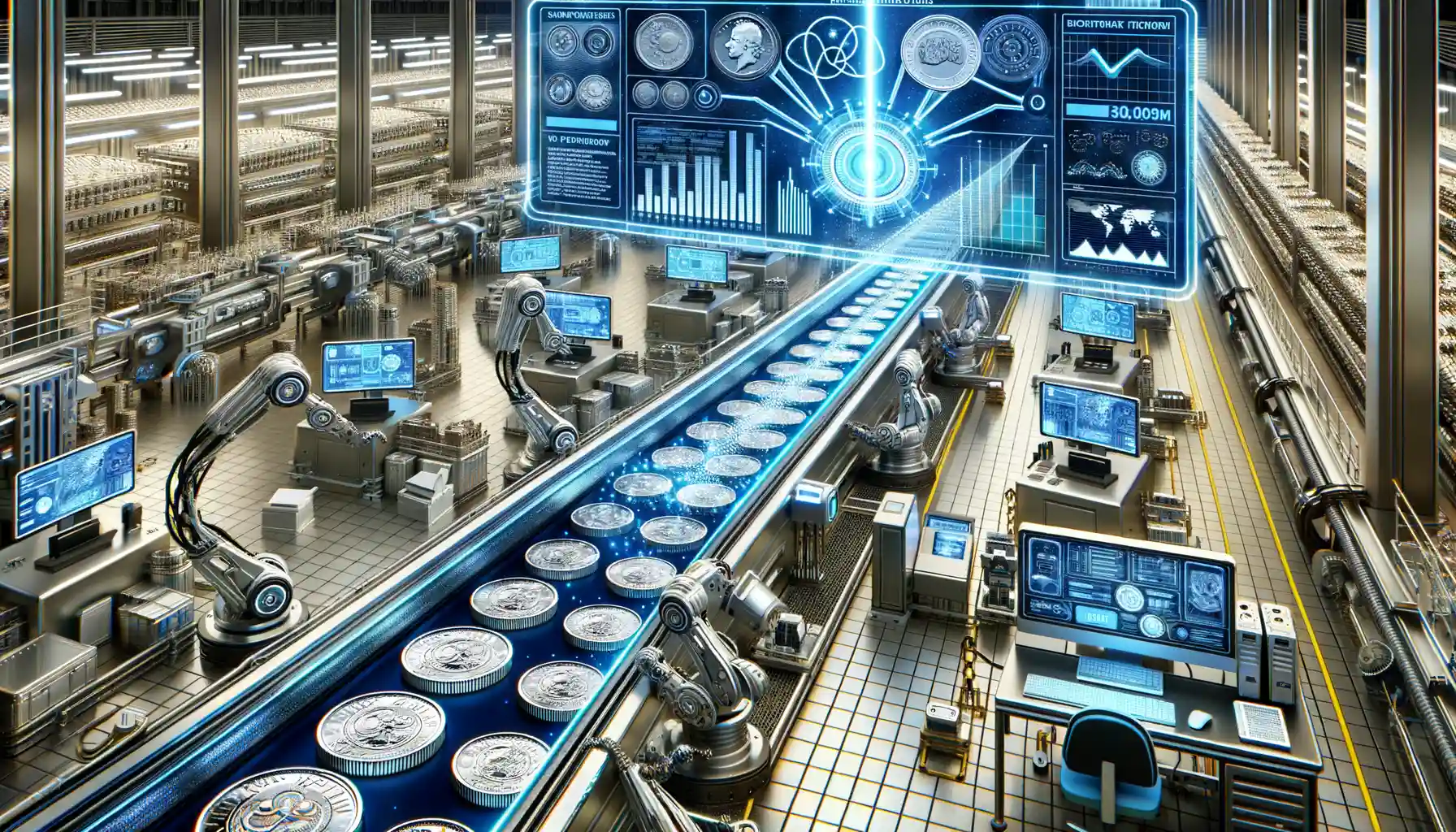The Historical Evolution of Coin Minting
A Journey Through the Ages of Coin Creation
Close your eyes for a moment and imagine holding an ancient coin, its edges worn smooth by centuries of hands. That tiny piece of metal holds stories, secrets, and the history of civilizations within its surface. The art of coin minting has evolved like a winding river, carving its path through the ages.
In the beginning, coins were hand-struck—a process as raw and intimate as it sounds. Picture this: a craftsman placing a blank disc of metal atop a die engraved with a design, then hammering another die on top. Each swing of the hammer was a leap of faith, an imprint of human imperfection. Early coins from places like Lydia (modern-day Turkey) were made from a shimmering alloy called electrum, blending gold and silver in nature’s own alchemy.
But the winds of innovation swept through empires like Rome and Byzantium. Enter mechanical presses. These machines didn’t just mint coins; they revolutionized economies, enabling standardized currency across vast territories.
- The screw press: Think of it as a giant metal corkscrew stamping intricate designs onto blanks.
- Steam-powered mints: Imagine industrial-age ingenuity churning out coins faster than ever before, yet still capturing every exquisite detail.
From hand-struck marvels to the rhythmic clink of machinery, every coin tells the story of progress. Isn’t it astonishing how something so small can encapsulate humanity’s creative spirit?
Modern Coin Minting Techniques and Technologies

Precision Meets Innovation: The Tools of Modern Coin Minting
Step into the dazzling world of modern coin production, where age-old craftsmanship marries cutting-edge technology. Today’s minting processes no longer rely on mere hammer blows or simple manual presses. Instead, they’re powered by laser precision and advanced machinery that borders on wizardry.
One standout innovation? The use of high-speed coin presses capable of striking up to 750 coins per minute! Each coin emerges flawless, its design crisp enough to marvel at under a magnifying glass. Then there’s the role of computerized engraving techniques, which allow artists to transform intricate hand-drawn sketches into digital 3D models. This eliminates guesswork and ensures every detail—from an emperor’s profile to the shimmer of a fictional galaxy—is spot-on.
- Laser etching machines: Adding microscopic security features invisible to the naked eye.
- Anti-tarnish coatings: Protecting coins while keeping their shine timeless.
Revolutionary Alloys and Sustainability in Coin Making
The materials used today are nothing short of revolutionary. Think bimetallic coins, where two metals combine, not just for durability but for stunning contrast and color. Mints worldwide are also waltzing toward greener processes, experimenting with recycled metals and reducing waste wherever possible.
Picture this: the Canadian Mint actually uses recovered nickel from old electronics to craft its coins. How’s that for blending tradition with sustainability? These innovations don’t just push the boundaries—they redefine what a coin can be.
The Role of Design in Coin Production

Design: Where Art Meets Functionality
Close your eyes and picture a coin in your hand. Not just any coin, but one that has been thoughtfully designed—its intricate details almost whispering stories from another era. The design of a coin isn’t simply about aesthetic flair; it’s the beating heart of its identity. Every curve, symbol, and texture embodies cultural, historical, or even political significance.
Designers often face an exhilarating challenge: merging beauty with practicality. For instance, a coin must feel distinct when gripped between your fingers. Those raised edges? They aren’t just decorative—they help users easily identify coins by touch and reduce wear over time. And let’s talk about durability. A beautiful motif might look stunning on paper, but it needs to withstand decades of pocket jangling, market stalls, and maybe even nesting somewhere beneath your couch cushions.
- National emblems: Instilling pride and heritage.
- Textures and engravings: Enhancing utility and preventing counterfeiting.
- Special editions: Coins that double as collectible treasures (think Olympic or royal commemoratives).
A great coin design doesn’t just capture your eye—it leaves a lasting impression in your palm, a tiny masterpiece carried in everyday life.
Challenges and Innovations in the Minting Process

Unseen Obstacles in Crafting Perfection
Behind every gleaming coin lies a battle of precision and imperfection. The minting process, though steeped in modernization, continues to face challenges that can boggle the mind. Imagine this: a press exerting hundreds of tons of force just to imprint detailed designs onto a blank disc. What happens if the pressure isn’t *just right*? A misaligned strike and your perfect coin becomes a flawed reject.
Material consistency is another nemesis of the minting world. Nickel, copper, silver—each metal behaves differently under stress. A slight impurity, and suddenly the coin’s shine fades or its durability weakens over time. And let’s not even get started on counterfeit prevention; every curve and texture must whisper, “Authentic,” while staying ahead of increasingly skilled counterfeiters.
- Striking coins evenly while preserving intricate designs.
- Ensuring metals blend flawlessly for strength and sheen.
- Incorporating cutting-edge anti-counterfeit measures like micro-texts or holograms.
The Spark of Innovation: Beyond Tradition
But here’s the twist—such challenges fuel creativity like sparks charging a fire. One breathtaking breakthrough? The use of laser technology to carve microscopic yet hyper-detailed patterns, impossible to replicate by hand. Or how about environmentally friendly methods? Some mints now use recycled metals, reducing waste without compromising quality.
These innovations don’t just solve problems; they push boundaries. Think of the Royal Canadian Mint’s glow-in-the-dark coins or nanotechnology being tested for surface security. Who knew a simple coin could double as a marvel of modern ingenuity?
The Future of Coin Minting: Trends and Predictions

Where Tradition Meets Tomorrow: Emerging Trends in Coin Minting
Imagine holding a coin in your hand that’s not just a piece of metal but a gateway to cutting-edge technology or even an investment in environmental care. The future of coin minting is poised to transform how we view these small yet mighty objects.
One trend reshaping minting is the rise of smart coins. These are no ordinary pieces of currency—they could embed microchips or QR codes, revolutionizing how we authenticate and trace their origins. Think digital meets physical: a coin you can scan to reveal its story, where it’s been, and perhaps even its worth in real-time.
Another game-changer? Sustainable practices. Modern mints are diving into green technologies like recycled metals, energy-efficient minting methods, and even biodegradable packaging for collectors’ items. Here’s how sustainability is making waves:
- Eco-friendly materials replacing traditional alloys.
- Smart factories that reduce waste and emissions during production.
- Collaborations with environmental organizations to promote awareness.
Designing the Future: A Digital Renaissance
What happens when you mix centuries-old craftsmanship with futuristic digital tools? You get a coin that feels like a masterpiece pulled straight from an artist’s dream. Virtual Reality (VR) and Artificial Intelligence (AI) are becoming the designer’s new best friends. Picture this: AI programs assisting in creating intricate patterns inspired by cultures across the globe, while 3D printing prototypes bring these visions to life faster than ever before.
And let’s not forget the demand for personalization. In the near future, you might commission a coin minted with your portrait or a design celebrating your cherished memory. The idea of “mass-produced” could fade into history as customization takes center stage.
The possibilities are dazzling, aren’t they? Coins may soon become as dynamic and multi-faceted as the world we live in. What a time to be a collector—or simply someone who appreciates the small things with big stories to tell.